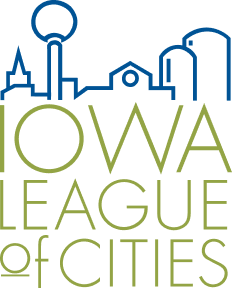This is the second year of the Governmental Accounting Standards Board Statement Number 77 (GASB 77), which is now an annual requirement. The Statement requires governments that participate in tax abatement agreements and policies to communicate the impact of those agreements with the other taxing agencies in their area using June 30 information. The cities that participate will have to provide the information for the fiscal year ending June 30, 2018. In early July, the Iowa Department of Management will provide two tools to calculate the impact and generate the letters necessary to be provided to the affected government.
While most GASB statements only impact cities that are required to prepare financial statements, GASB 77 Tax Abatements Disclosures is an exception. Every city which makes payments during the year ending June 30, 2018, on tax increment financing (TIF) development agreements, rebates or grants or abates valuation under a revitalization plan will play an important role in implementing GASB 77.
GASB 77 requires governments to disclose in the notes to their financial statements the amount of revenues they promise to forgo through agreements with individuals or entities which promise to take specific actions after the agreements have been entered into that contribute to economic development or otherwise benefit the governments or the citizens of those governments.GASB 77 also requires governments to disclose in the notes to their financial statements the portion of revenues which the government would have otherwise received that other governments have promised to forgo through their tax abatement agreements.
For cities and counties, there are two primary types of transactions which will require disclosure: 1) (TIF) development agreements, rebates or grants under state code Chapter 403 Urban Renewal and 2) Urban Revitalization programs under state code Chapter 404. Tools have been developed to assist cities for each type of transaction in collecting and providing the information needed to disclose the tax abatement information in the government’s financial statements and notifying jointly affected governments.
By entering the unique urban renewal area number and the amount of rebates and grants paid during the year, the urban renewal tool identifies the governments impacted and calculates the amount of revenue foregone by each of those governments. The tool also generates letters communicating the required information to the impacted governments. On the urban revitalization tool, by entering the amount of abated valuation, the city name, county, school district, community college, county hospital, rural improvement zone and regional transit authority the tool will calculate the amount of revenue foregone by each of those governments. There is a separate tool to assist in generating letters communicating the required information to the impacted governments.
These tools will be available on the Iowa Department of Management Web site the first part of each July. The tool is also demonstrated at the Iowa Municipal Professionals Academy training event on July 26 in Ames.
Recorded Training and Q&A
The following Q&A is intended to be used with a recording of the Iowa Department of Management and Auditor of State. This recording can be found on the League’s YouTube channel.
Q: We are a small city that is in the “Pool” for examinations. What do we need to do for GASB 77?
A: The trigger for GASB 77 is the city’s use of tax abatements related to rebates and grants from TIF or Revitalization Abatements. If your city has paid tax abatements to an entity during the year from TIF revenue divided during the year, you will need to use the tool to send letters to all of the other governments impacted by your tax abatement.
Q: Do we have to send a letter if we did not pay for any rebates or abated any valuation during that fiscal year?
A: Yes, you should send a letter to each of the taxing jurisdictions even if the amount for them is zero. This will document that you have complied with the requirements for all jurisdictions impacted by GASB 77.
Q: Do charter schools and private schools need to get GASB 77 compliance letters?
A: No. They receive money only through payments from taxing authorities. Since they do not directly receive tax, they are not covered under GASB 77.
Q: Where can I find this GASB 77 Calculator tool?
A: The tool is available on the Department of Management’s Web site: https://dom.iowa.gov/gasb-77-resources.
Q: Does the GASB 77 Calculator tool adjust for the school protected levies (PPEL and ISPL)?
A: Yes, the calculator tool does adjust for both school levies by taxing authority.
Q: Does the GASB 77 Calculator tool include the Labor Market Information (LMI) requirement?
A: The LMI requirements are not reportable under GASB 77 reporting requirements because they are used by the city and not an outside entity.
Q: Will we get letters from the county if they use tax abatements/rebates?
A: Yes, the city may receive letters from the county that uses tax abatements, rebates or abates valuations under Chapter 404 of the state code. (See GASB 77 calculator tools to see who you need to send letters to and who will send you letters.)
Q: Is there a template for the letters we need to send to the other taxing authorities?
A: Yes, the letters are generated by the GASB 77 calculator tool. The city needs to fill in the numbers on the Summary tab, enter the name of the city contact person on the Letters tab, and print out the letters generated on that worksheet.
Q: Why are some of the lines on the Urban Renewal GASB 77 calculator red while others are black?
A: The black lines indicate active TIF districts that receive increment in that fiscal year. The red lines are for those districts that are active but did NOT receive increment in that fiscal year.
Q: Does the city council need to take any action on the calculation before the letters are sent to the other taxing jurisdictions?
A: No, the council does not need to take any action.
Q. When should we expect to receive the letters from governments with tax abatements that impact our city? And when should we complete the letters we send to other governments?
A. The letters should be completed as soon as possible after the close of the fiscal year to facilitate the completion of all governmental financial statements in a timely manner.






